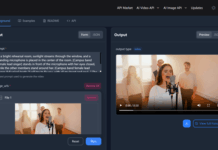 You may already be familiar with the Helm repository by JFrog, which are remotely hosted servers comprising of a cluster of Kubernetes resource files. Containerization is means to pair software code and its Operating Systems requirements into a singular unit. This package upon installation by default allows the basic framework for the operationality of the software application on your local machine.
You may already be familiar with the Helm repository by JFrog, which are remotely hosted servers comprising of a cluster of Kubernetes resource files. Containerization is means to pair software code and its Operating Systems requirements into a singular unit. This package upon installation by default allows the basic framework for the operationality of the software application on your local machine.
With this possibility, you won’t need to separately install all the required software dependencies and requirements for running your application or program which will save you time and space. Read on further to learn which Helm repositories are the best suited for you and your needs.
What Are Helm Repositories?
In the rudimentary method, the produced code would require being manually copied, installed, or moved in a computational environment, this was prone to getting numerous errors or may result in the data being corrupted. Containerization eliminates this problem removing the hassle of bug handling and error detection completely from this process as containers are abstracted from the operating environment it is hosted on, it is stand-alone and runs independently.
Kubernetes entities are challenging to work with, especially for beginners. With the availability of such beneficial tools as Helm, the Kubernetes learning curve becomes less daunting and more effortless. Helm automates the management of YAML and epitomizes Kubernetes objects by packaging data as charts and displaying them via a Kubernetes cluster.
As a beginner familiarizing with the Kubernetes ecosystem, the Helm repository functions as a remote server containing your collection of resource files. Helm sends packages of applications to Kubernetes and structures them into charts. These charts contain all pre-designed application resources and formattings into one reasonable bundle.
Why You Should Consider Using Helm Repositories And Which Is Best Suited For You?
A few repositories available currently are:
- Gitlab Omnibus: Used for deploying Gitlab in Kubernetes.
- Jupyterhub and Binderhub: Charts for deploying assistance to run Jupyter notebooks.
- Harbor: Harbor is a container and Helm registry with built-in security and safety protocols.
- OpenStack: Includes a variety of charts by the OpenStack project.
- Fn Project: Fn serverless platform charts.
- Lenses: Compromises of charts for Lenses, Apache Kafka, Kafka Connect, and other components for data streaming and data integration.
- Zalenium: Adjustable and scalable container-based Selenium Grid with video recording, live preview, basic auth & dashboard design.
To choose the helm repository best suited to your needs consider how crucial to your corporation are each of the offerings of Helm, it empowers you to customize application configurations even when the deployment process is ongoing. If your enterprise or business is based on such instances where this may be crucial in streamlining your CI/CD pipelines it’s a must to consider the benefits it brings to you.
Helm also keeps a database of all the versions of your releases, ready and delivered products automatically which enhances productivity and risk management. It lets software developers do what they are best at writing code. With Helm, deployment of the test environment becomes effortless.
Helm also takes away from the hassle of constructing various development, testing, and production domains. Lastly, an important element of the helm repositories is that they are made for use by businesses. Safe and confidential Helm repositories offer a superior level of reliability and resilience that can build servers, and adjust to any number of users, and interactions.
Helm packages consist of a few YAML with configuration files, specification files, and templates rendered into the K8s cluster. Helm charts and repositories aid in installing, defining, and upgrading the Kubernetes application; moreover, when it comes to deploying complex applications they are very helpful. Helm features include the ability to version the manifest files as well. This aids if you may need to go back and forth in between versions to install any specific. A single chart might be utilized for the deployment of simple or complex, entities may it be an entire web application stack with databases, HTTP servers or caches, etcetera.
The cloud-based tool also provides a massively scalable repository for storage purposes which makes it easy to manage different versions and histories as well.
Charts are displayed in directory trees and packaged into Helm chart repositories. To deploy applications with Helm, you must know how to manage repositories. Helm repositories can also be extremely helpful in managing Big Data and in line with AI and ML implementations to aid you in effective workflows per your needs. There’s also a significant rise in other AI-related SaaS products on the market that may be interesting to familiarise with.
In conclusion, Helm repositories can help you redesign your software requirements, safely deploy, install and update as well as manage storage on your local machines more efficiently.
There are multiple benefits of this integrative tool in your continuous integration and continuous development processes, DevOps engineers truly love the endless amount of ease and the automated facility it provides, IBM highlights a comprehensive guide on utilizing helm repositories that you may find helpful to get yourself started.


















